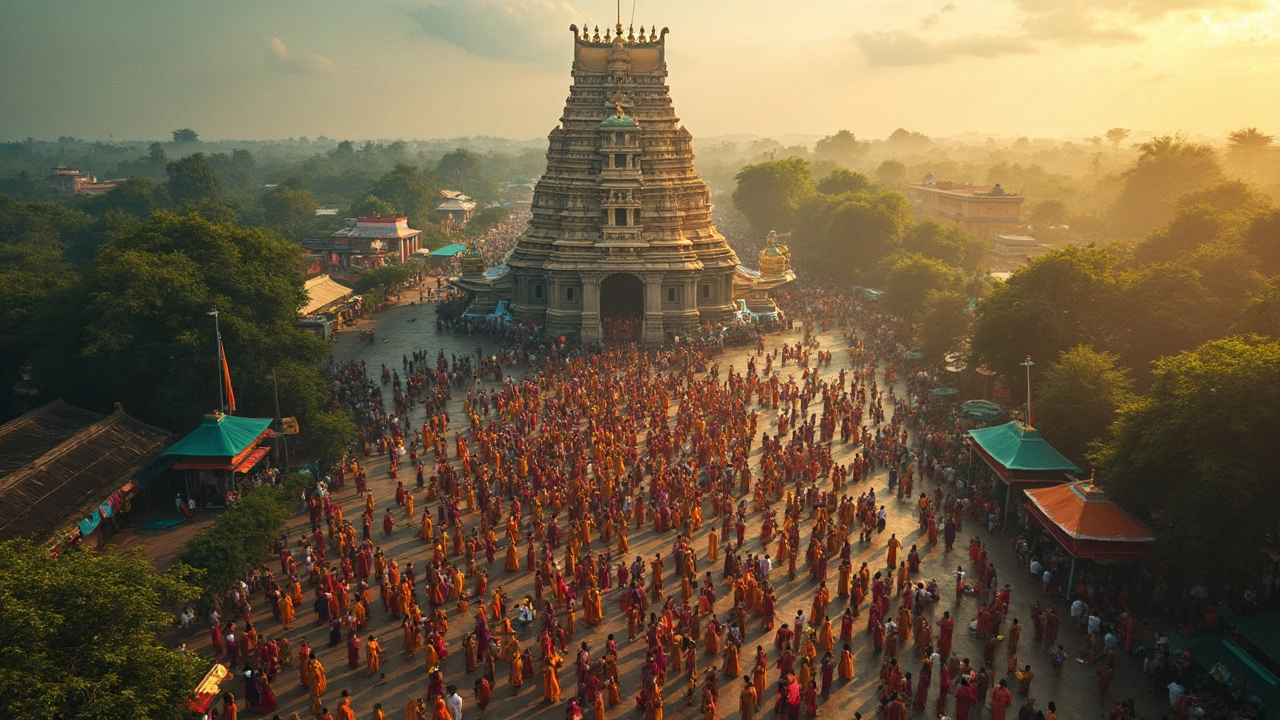Attukal Temple: Rituals, History, and What to Know Before You Visit
When you think of Attukal Temple, a historic Hindu temple in Thiruvananthapuram, Kerala, renowned for its annual Pongala festival that draws millions of women. Also known as the Bhagavathy Temple, it’s not just a place of worship—it’s a living cultural phenomenon where devotion takes the shape of a massive, communal offering. This temple stands apart because it doesn’t just welcome visitors—it transforms them into participants in one of the most extraordinary religious events on Earth.
What makes Attukal Temple unique isn’t just its age or architecture—it’s the Pongala, a ritual where women cook a sweet rice offering in clay pots on the streets around the temple, all at the same time. This isn’t a quiet prayer. It’s a sea of smoke, steam, and singing women—over five million of them in some years—creating a sacred space with fire and devotion. The ritual is tied to the legend of Kannaki, a woman from ancient Tamil lore who became a goddess of justice. Her story is woven into the very fabric of this event, making it more than a festival—it’s a collective act of remembrance and empowerment.
Attukal Temple also connects deeply to Indian temple customs, the unwritten rules and traditions that govern how people enter, behave, and offer prayers in sacred spaces. Unlike many temples, Attukal doesn’t restrict entry based on caste or gender. Women are the central force here—not just as devotees, but as active creators of the ritual. That’s rare. Most temples have strict dress codes and gender-based restrictions, but here, women in simple sarees, barefoot and smiling, cook side-by-side, sharing space, food, and faith. If you’ve read about temple etiquette in India, this is where those rules get rewritten by collective spirit.
You’ll also find that Kerala temples, a distinct style of temple architecture and practice found in the southern state, blending Dravidian design with local traditions. are different from those in North India. They’re often smaller, surrounded by trees, and less crowded—except during Pongala. The rituals here are less about elaborate ceremonies and more about personal connection. You won’t find loud bells or chanting priests dominating the space. Instead, you’ll hear the soft crackle of clay pots, the murmur of prayers, and the rhythm of feet moving in unison.
Planning a visit? You don’t need to come during Pongala to feel the temple’s energy, but if you do, prepare for crowds, heat, and a whole lot of heart. Bring light cotton clothes, avoid leather, and don’t expect to walk in and out quickly. The real magic isn’t in the idol—it’s in the women cooking, the elders guiding, the children helping, and the silence between the flames. This isn’t a tourist attraction. It’s a living tradition, and if you’re lucky enough to witness it, you’ll remember it longer than any monument.
Below, you’ll find real stories and practical tips from people who’ve walked these grounds—whether they came for the festival, the peace, or just to understand what makes this temple so powerful.
